While Hakone has a somewhat deserved reputation as being a tourist trap for day-tripping Tokyoites there’s still enough space to loose the crowds and last October I paid a second visit.
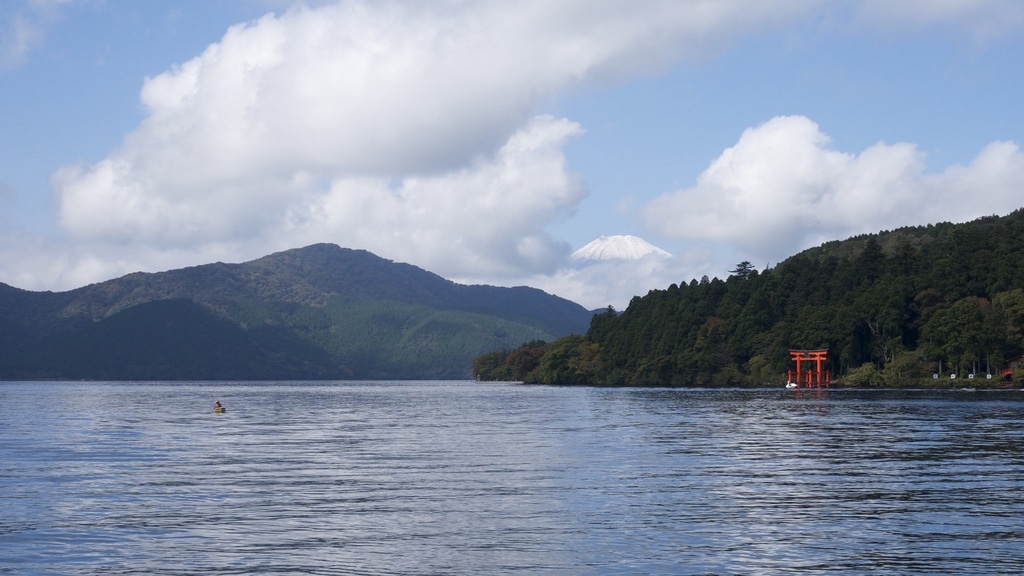
Beneath the snow-flanked sides of Mt. Fuji, built in commemoration of the Peace Treaty which formally end World War II, a red torii gate sits in the water on the Southern shore of Lake Ashi.
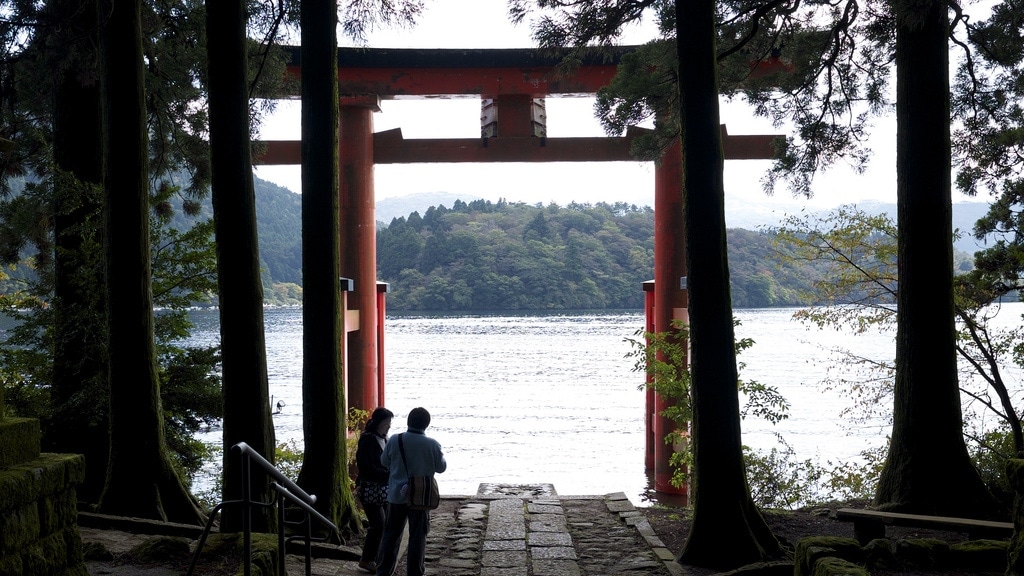
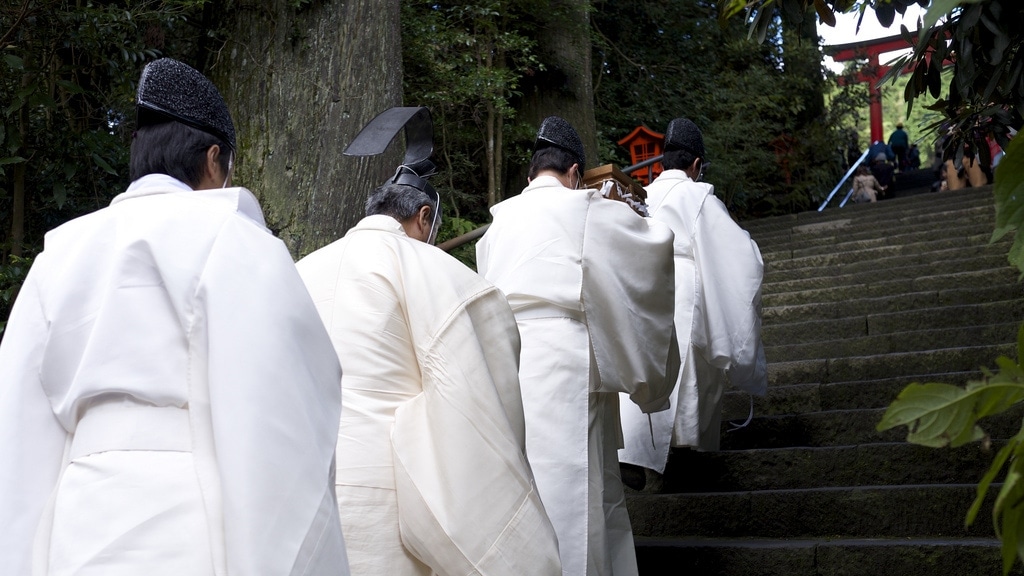
Flanked by lanterns on either side, a solitary path leads from the gate through the dense forest to Hakone-jinja Shrine (箱根神社), which sits peacefully among the tall trees.
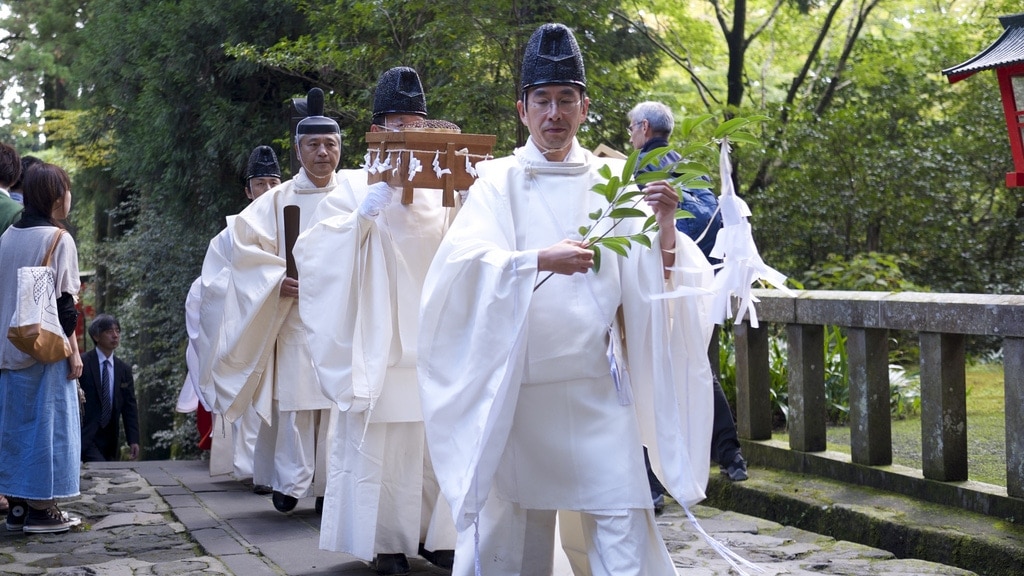
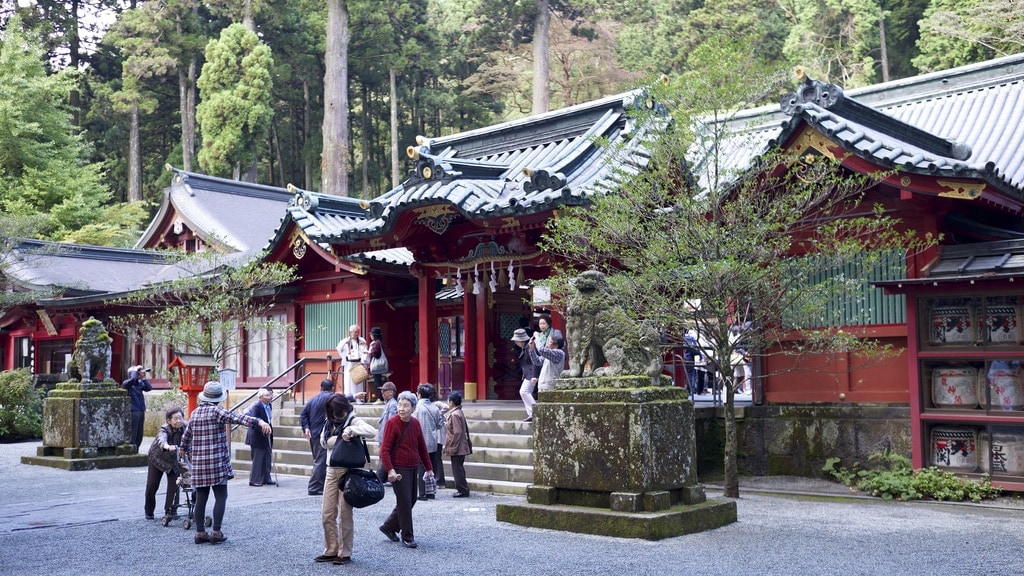
The Shinto shrine was founded in circa 760 but, having been destroyed many times by fire, the current buildings date back to 1936.
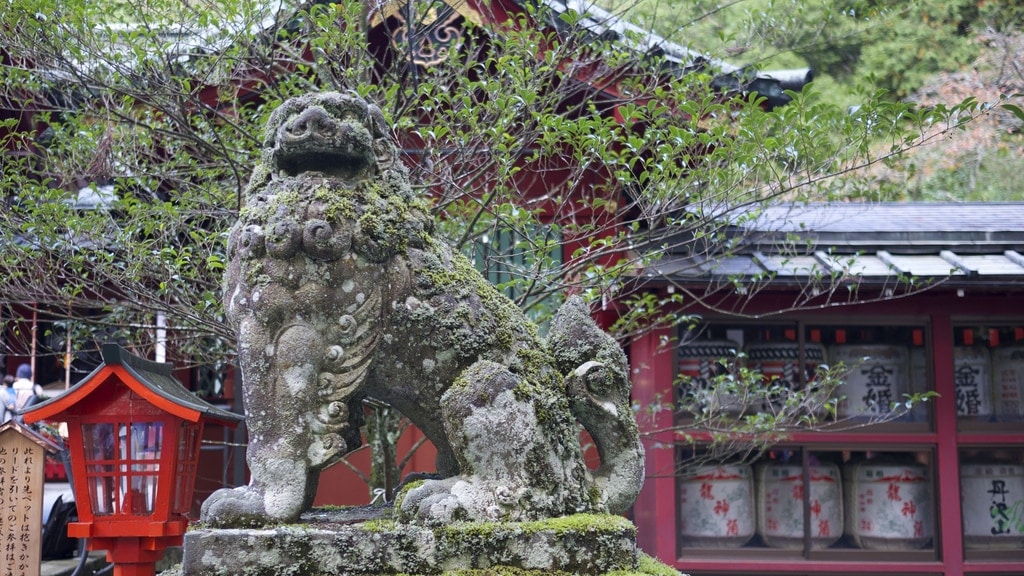
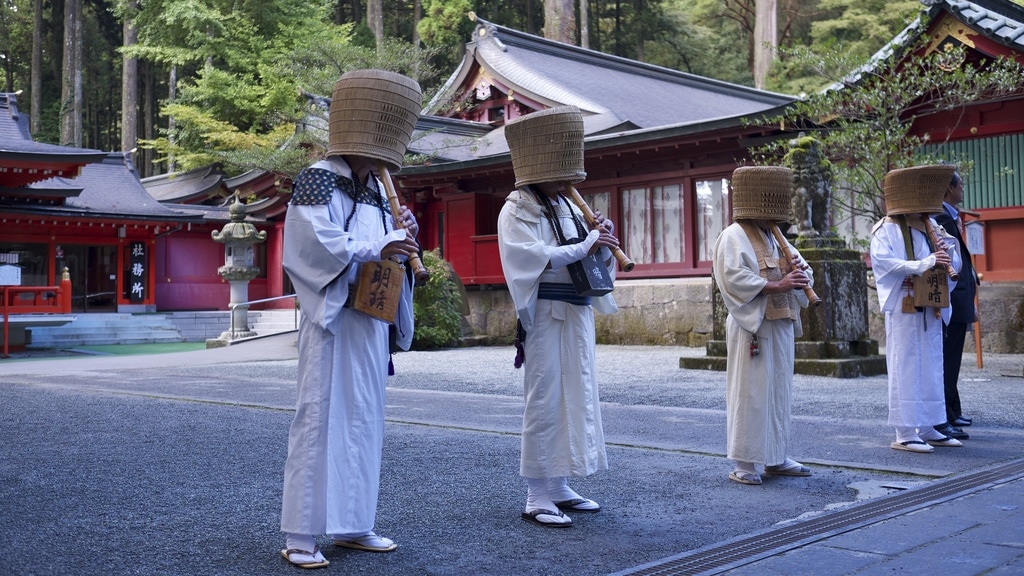
Outside the main hall of shrine, we came across a curious troupe of men wearing baskets on their heads and playing bamboo flutes. It turns out they were an interesting order of Zen Buddhist pilgrim monks known as komusō (虚無僧), or the “monks of emptiness”, who flourished during the Edo period of 1603-1868.
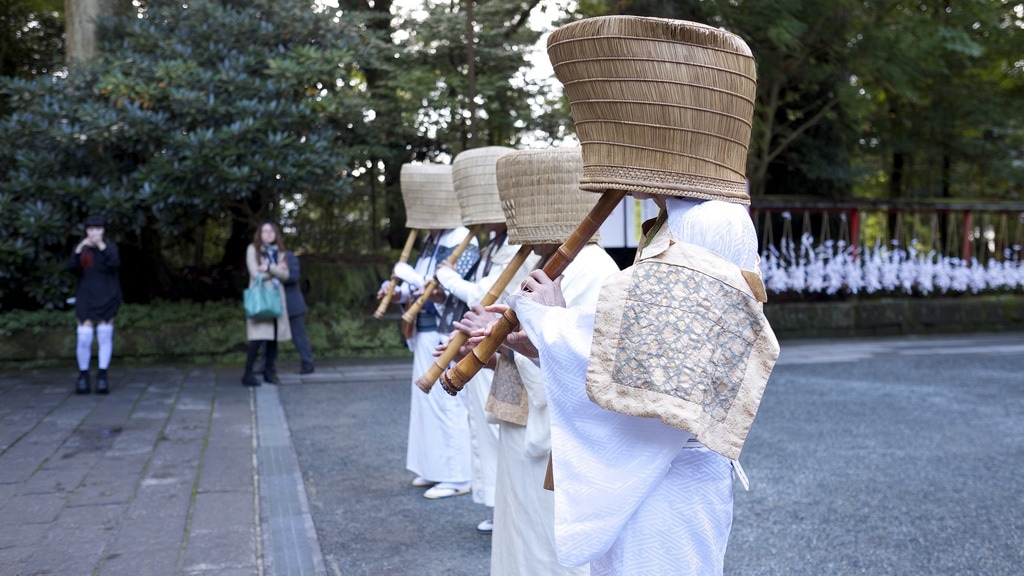
Komusō represented the Fuke Zen Buddhist School, a branch of Buddhism originating from China. Their unusual and distinctive feature, the straw basket worn on the head (a sedge or reed hood named a tengai), symbolised the “absence of ego”.
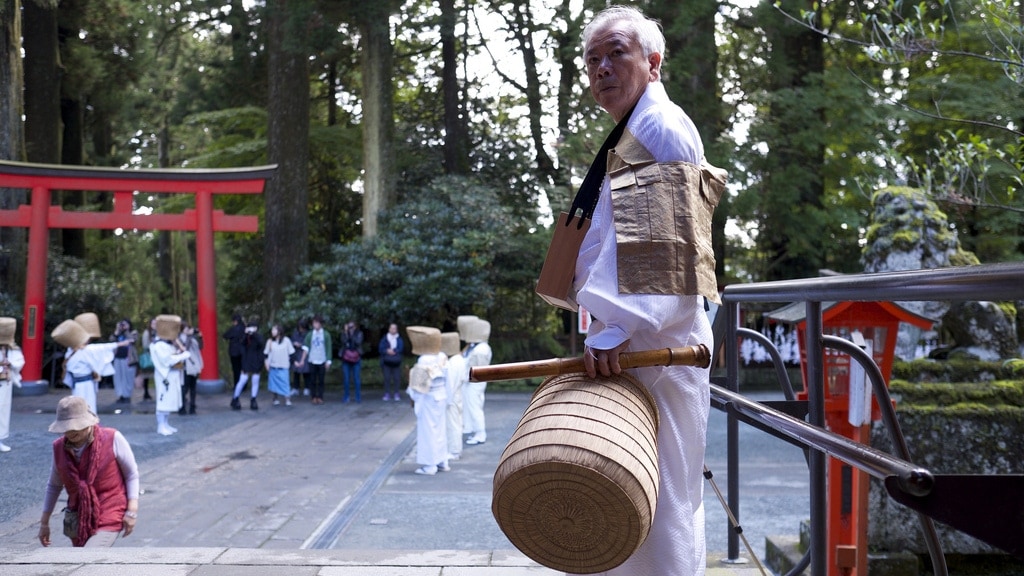
Komusō practiced suizen, which is meditation through the meditative blowing of a shakuhachi (Japanese bamboo flute), as opposed to zazen, which is meditation through quiet sitting as practised by most Zen followers.
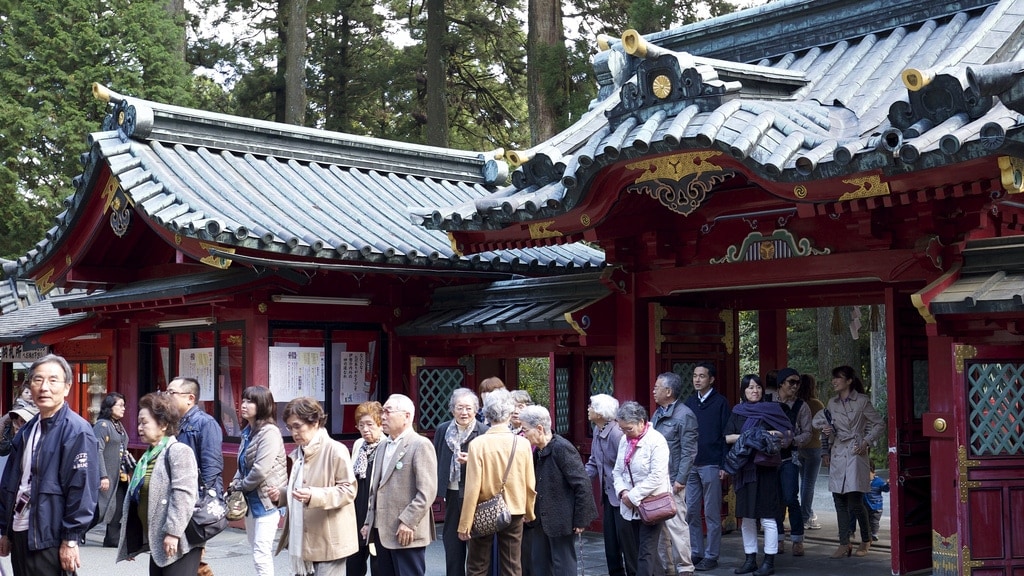
Besides the uniquely attired monks, plenty of normal pilgrims were lined up to pay their respects too.
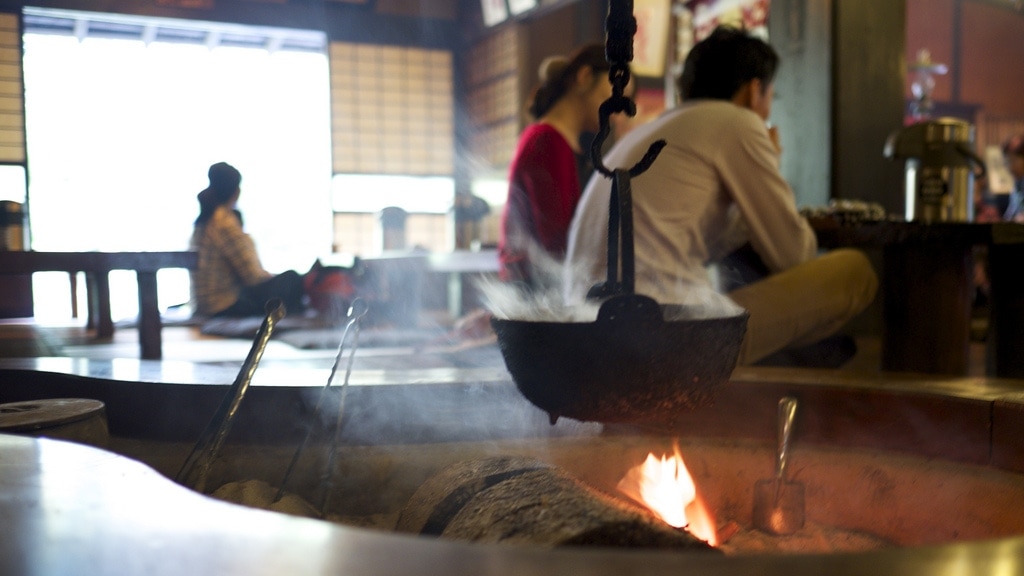
After visiting the shrine we walked a section of the Old Tokaido Highway (東海道) and were rewarded at the end by delicious rice wine and mochi cakes at Amazake Chaya (甘酒茶屋) whose thatched roof and earthen floor also hark back to far earlier times.

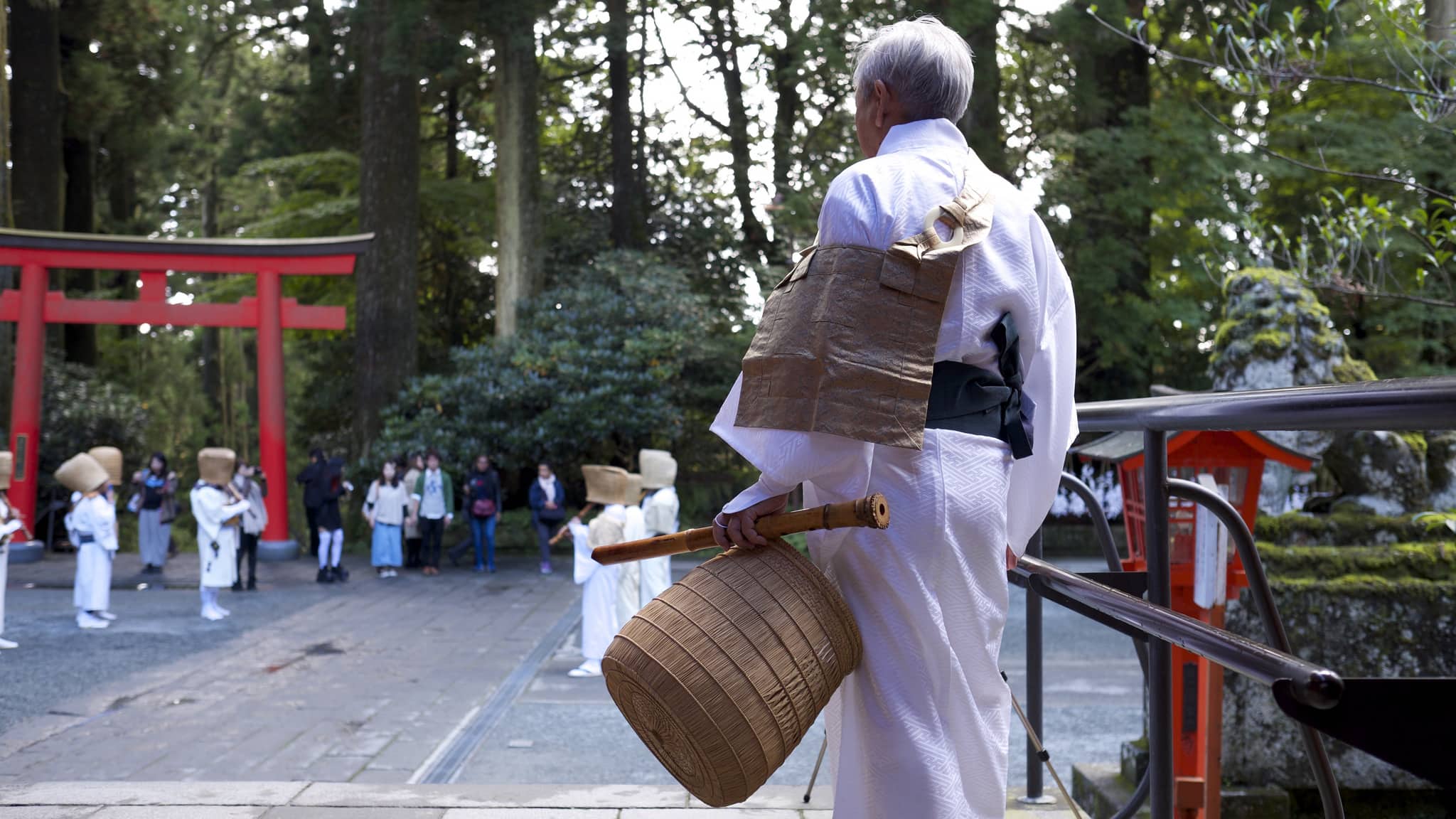
Reply